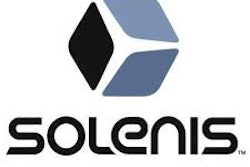
 OSHA’s HazCom 2012 chemical safety standard requires companies to maintain a Safety Data Sheet (SDS). That sounds similar to the old Material Safety Data Sheet (MSDS), so what’s the difference?
OSHA’s HazCom 2012 chemical safety standard requires companies to maintain a Safety Data Sheet (SDS). That sounds similar to the old Material Safety Data Sheet (MSDS), so what’s the difference?
The background:
Under OSHA’s rules for workplace chemical safety, workers have a right to know about the hazards present in their workplace. This idea is so important that “Right To Know” (RTK) became the common name for a set of OSHA’s rules about chemical labeling. But those rules, published in 1994, didn’t require employers to use any particular format for the information they provided to workers. The result was a wide variety of approaches and a lot of confusion.
One part of the RTK rules required employers to keep a document on file for each hazardous chemical present in the facility. These documents had to provide data about the safety concerns related to each material, and so they were called Material Safety Data Sheets (MSDSs). Since OSHA didn’t require any particular format to be followed, two MSDSs for the same chemical may have looked completely different.
In 2012, OSHA published a major revision to the RTK rules, creating a new system called HazCom 2012. This regulation for chemical safety in the workplace is based on an existing international standard, called the Globally Harmonized System (GHS). One important part of the new rules requires a single, specific format to be followed in the detailed documentation for hazardous chemicals. This format is the Safety Data Sheet (SDS).
 What’s the difference between an MSDS and an SDS?
What’s the difference between an MSDS and an SDS?
The difference is more than just the “M” at the beginning. While MSDSs could follow any number of different formats, and could include different kinds of information with different levels of detail, the SDS format is much stricter. An SDS is made up of sixteen sections, each of which must include specific information using a standardized classification method.
There is likely to be a lot of overlap between an MSDS and an SDS for a given chemical. For instance, a flammable liquid will probably have its flash point noted on both forms. But converting from MSDS to SDS may not be easy.
Not all of the details that are required for an SDS may have been included on the old MSDS. Because there are dozens of ways to organize an MSDS, it may take a careful reading to even find out what details are missing!
If moving from an MSDS to an SDS is more than a simple translation, how are businesses supposed to make the change? Fortunately, the process is simpler than you may think.
Request an SDS from your supplier:
If your hazardous chemical is provided by an outside organization, that organization is responsible for providing an updated SDS. You may have already received an updated SDS along with your recent shipments. If not, you can request a current SDS by contacting that chemical supplier. Many suppliers provide these forms on their websites, as well.
“Translate” from MSDS to SDS:
If your facility produces the chemical in question, then you’ll need to make an SDS yourself. This isn’t so much about “translating” from one format to another as it is “filling in the blanks.” Don’t start with your existing MSDS and try to translate it; instead, start with a listing of the details that you need, and copy items over from the existing MSDS. You may find that you don’t have some of the elements that are required. If so, those will be the points that you need to find test results for.
OSHA lists out the minimum information for an SDS in Appendix D to the HazCom 2012 regulations. You can use that listing as a framework for your own SDS, filling in the blanks to create a complete and compliant Safety Data Sheet.
Brian McFadden is a technical writer and compliance specialist with Graphic Products.






















